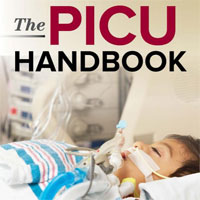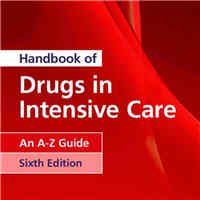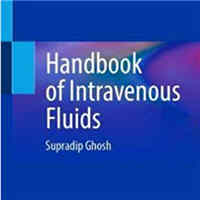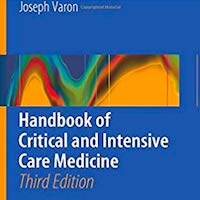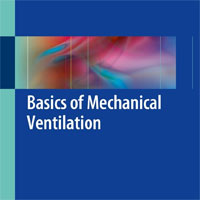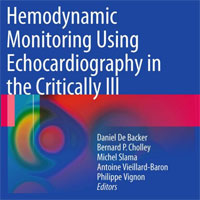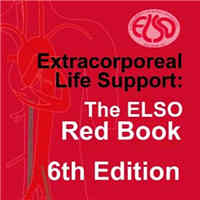Tag: CAP
Serum MANF vs. Severity and Prognosis in Community-acquired Pneumonia Patients
This evidence demonstrated that serum mesencephalic astrocyte-derived neurotrophic factor (MANF) is positively associated with scoring criteria and poor prognosis in community-acquired pneumonia (CAP) patients. Serum... read more
Eosinopenia as a Predictor of Clinical Outcomes in CAP Patients
Contrary to previously published data, our analysis did not demonstrate an association between eosinopenia and increased mortality risk in hospitalized patients with community-acquired pneumonia (CAP), highlighting the complexity... read more
Two Biomarkers Improve CRB-65 Predictability for Death Due to Community-Acquired Pneumonia
Augmenting CRB-65 (confusion, respiratory rate, blood pressure, and age 65 or older) score with troponin T high-sensitive (TnT-hs) and procalcitonin (PCT) help to predict death or intensive care unit (ICU) admission of patients... read more
The predictive value of LAR for determining the need for ICU admission among hospitalized patients with community-acquired pneumonia
In this study, lactate-to-albumin ratio (LAR) was found to be a good predictor of ICU admissions in hospitalized patients with CAP and was non-inferior to PSI or CURB-65 scores. LAR was found to be a good predictor of... read more
Influenza-Complicated Thromboembolism in the ICU
Influenza-complicated thromboembolism (TE) among patients with severe influenza infection in the intensive care unit (ICU) is associated with increased risk for longer- duration mechanical ventilation, longer ICU stays, and... read more
Optimal Antibiotic Treatment Duration of Upper and Lower Respiratory Tract Infections
The available evidence for non-ICU community-acquired pneumonia (CAP) and chronic obstructive pulmonary disease (AECOPD) supports a short-course treatment duration of 5 days in patients who have clinically improved. Efforts... read more
Can Clinicians Identify CAP on Ultralow-dose CT?
This study found that clinicians could assess chest ULD-CTs for community-acquired pneumonia (CAP) with high, but not perfect, diagnostic accuracy using an ED radiologist’s assessments as reference standard. Interrater... read more
The Easiest Way to Reduce Antibiotic Resistance Might be Shorter Duration
Antibiotic stewardship garners a lot of attention these days, but we face unique challenges to execute guidelines successfully given that we write more than 13 million antibiotic prescriptions every year in EDs. Variations... read more
Adjunctive Intravenous Then Oral Vitamin C for CAP Patients
Patients hospitalised with community acquired pneumonia (CAP) have low peripheral blood vitamin C concentrations and limited antioxidant capacity. The feasibility of a trial of vitamin C supplementation to improve patient... read more
Lopinavir-ritonavir and Hydroxychloroquine for COVID-19 Patients
Recent trials involving steroids and other immunomodulators have shown benefits and contributed to improved care. Given the emerging nature of the virus, several repurposed agents were also considered as potential antiviral... read more
Procalcitonin-guided Antibiotic Treatment Effect on Mortality in Acute Respiratory Infections
Use of procalcitonin to guide antibiotic treatment in patients with acute respiratory infections reduces antibiotic exposure and side-effects, and improves survival. Widespread implementation of procalcitonin protocols... read more
Incidence of Arrhythmia Higher in COVID-19 vs. Other CAPs
The incidence of arrhythmia was higher in COVID-19 than in other community-acquired pneumonia (CAP), with 2 out of 10 COVID-19 patients dying after developing arrhythmia. Higher incidence rates of conduction disorders... read more
The Clinical Utility of MRSA Nasal Screening to Rule Out MRSA Pneumonia
Nares screening for methicillin-resistant Staphylococcus aureus (MRSA) had a high specificity and NPV for ruling out MRSA pneumonia, particularly in cases of CAP/HCAP. Based on the NPV, MRSA nares screening is a valuable... read more
Validation of Sputum Gram Stain for Treatment of CAP and HCAP
The usefulness of sputum Gram stain in patients with community-acquired pneumonia (CAP) is controversial. There has been no study to evaluate the diagnostic value of this method in patients with healthcare-associated pneumonia... read more
Prediction Model for Severe CAP among Patients with Diabetes Mellitus
Diabetes is an independent risk factor for the development of severe community-acquired pneumonia (CAP) and associated with pneumonia-related hospitalization as well as mortality. Here, we assessed several selected biomarkers... read more
Antibiotic Therapy for Severe CAP in the ICU
Researchers have assessed the impact antibiotic therapy on short (hospital) and long-term (6 months) outcomes of ICU patients with severe community-acquired pneumonia. Community-acquired pneumonia (CAP) remains one of the... read more
Corticosteroids for Treating Pneumonia
Pneumonia remains a major cause of morbidity and mortality in the United States.1 There is both theoretical and laboratory evidence that corticosteroids may have beneficial effects in pneumonia through local pulmonary and... read more
Validation and Clinical Implications of the IDSA/ATS Minor Criteria for Severe Community-Acquired Pneumonia
These findings support the use of the IDSA/ATS minor criteria to predict hospital mortality and guide ICU admission in inpatients with Community-Acquired Pneumonia (CAP) who do not require emergency mechanical ventilation... read more
Initial Inflammatory Profile in Community-acquired Pneumonia Depends on Time since Onset of Symptoms
Time since symptom onset modifies the systemic inflammatory profile at Community-acquired Pneumonia (CAP) diagnosis. This information has relevant clinical implications for management, and it should be taken into account... read more
Metabolic Profiles in Community-Acquired Pneumonia
This study demonstrates that serum metabolomics approaches based on the LC-MS/MS platform can be applied as a tool to reveal metabolic changes during CAP and establish a metabolite signature related to disease severity. The... read more
Long-Term Cognitive Impairment after Hospitalization for Community-Acquired Pneumonia
Recent studies suggest older patients hospitalized for community-acquired pneumonia are at risk for new-onset cognitive impairment. The characteristics of long-term cognitive impairment after pneumonia, however, have not... read more
Challenges and Opportunities for a Precision Medicine Approach to Critical Illness
Precision medicine in critical care is a key part of our present and future. However, many challenges limit its application for all patients in the ICU. Complex acute illness among patients with multi-morbidity, integrated... read more


